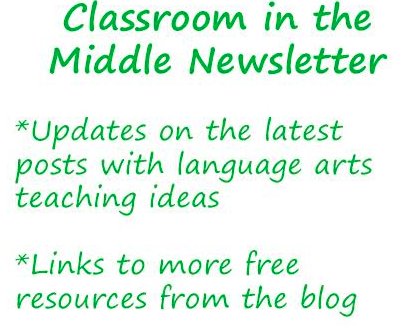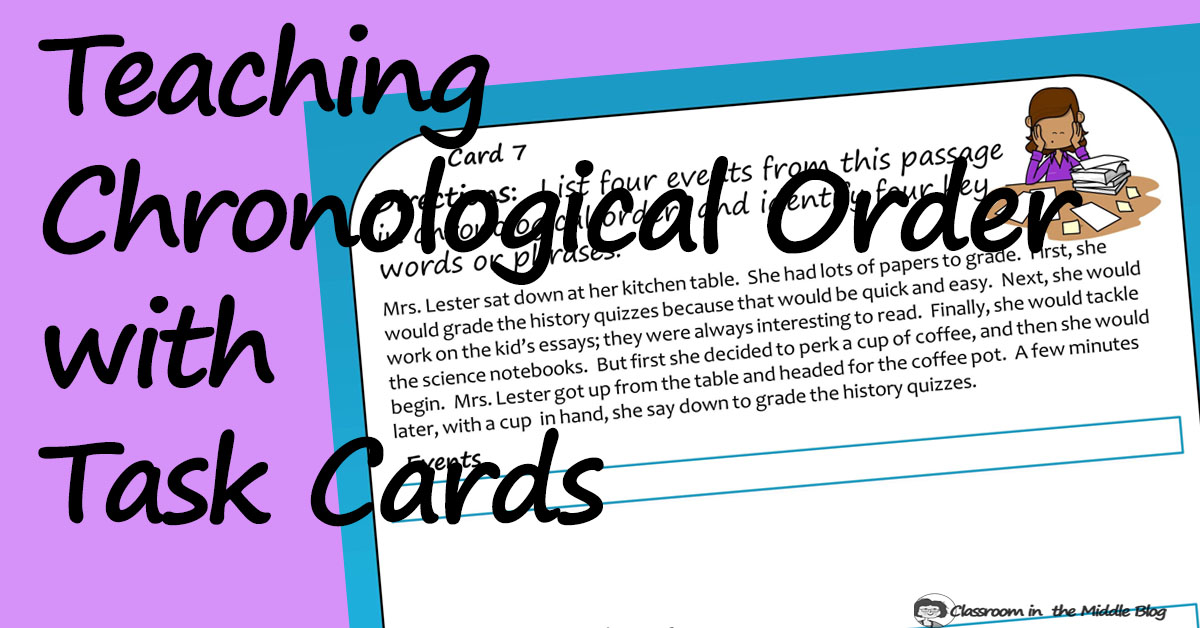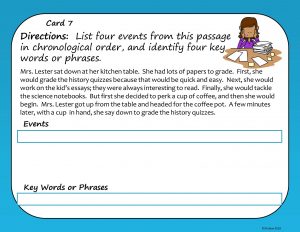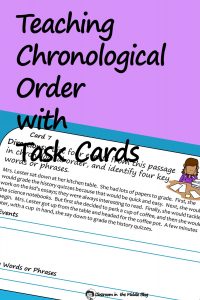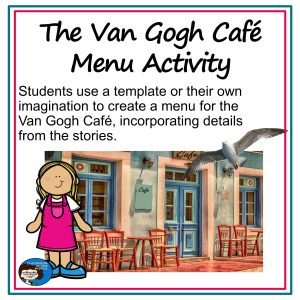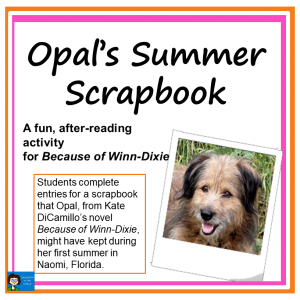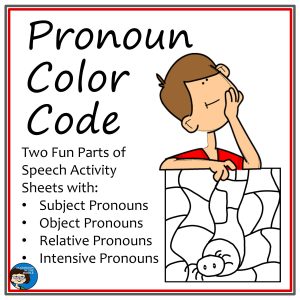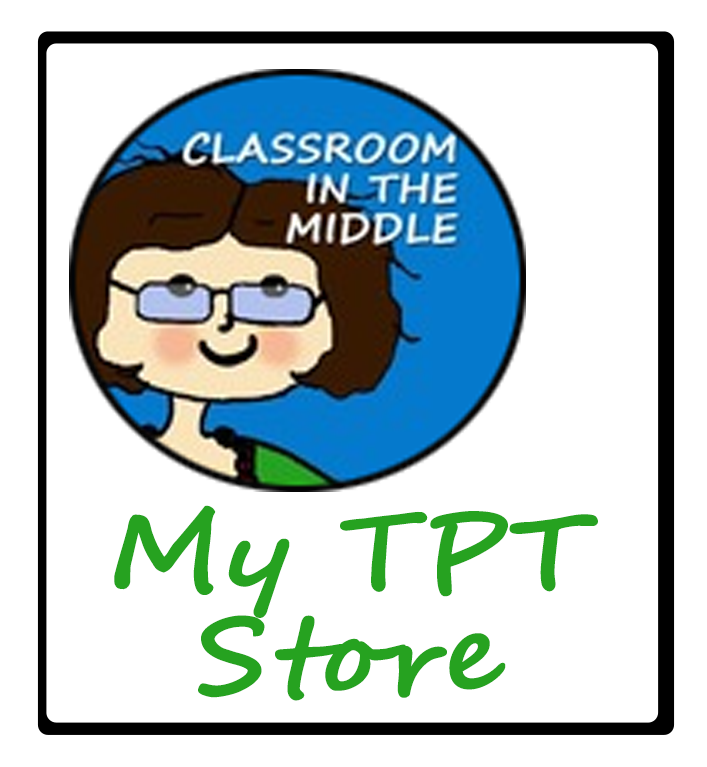Three fun things about teaching chronological order:
- It’s great for both reading and writing lessons.
- It’s great for tying your language arts lessons in with other subjects, especially history.
- There are lots of quick activities that are fun for students to use to practice their skills.
Task cards, of course, are great for quick practices. It’s so easy to use as few or as many as you wish, and lessons can easily be individualized just by your choice of cards. Here are some ideas – all taken from my Chronological Order Task Cards.
Practice with Short Passages
Novels and short stories are great for working in all types of reading skill practice, but when you just want to teach, or review, a certain skill, short passages are the most efficient materials to employ. With these cards, students read one very short passage – just a paragraph, follow instructions to list a certain number of events from the passage in chronological order, and identify key words. Done. Quick and to the point.
Identify Key Words
I like to combine identifying key words with short passage work, as on the card above. A list of key words for chronological order to keep in their notebooks might be a helpful tool here, or better yet – a list for each text structure!
Arrange Events in Order
This can also be easily done with a short passage. First students read the passage, and then sort a group of events to put them in the same order that they happened in the passage. Note that the events can only be put in the correct order after reading the passage; by looking at just the list of events alone, it’s not evident which should go first.
List the Steps
To take this one step further, students can write their own lists. For some students, this is not as easy as it sounds; first they must decide what is important to include, and they must also determine how to separate the story into discrete events.
Write about a Topic
Writing narratives is one of the main types of writing that students are expected to do. Why not fit it in with reading narratives and studying the chronological text structure – two objectives accomplished at once. Students can easily practice writing their own narratives while the idea of the sequential text structure is fresh in their minds.
Write from a Picture
A great prompt for a narrative writing assignment is a photo. Think of all of the front page news stories that hook your interest with a great photograph.
Use a Graphic Organizer
Whether it’s a good old-fashioned timeline, or a newer-looking organizer set up like a flow chart with shapes to fill in, a sequential organizer is a great tool. It not only requires students to think about the correct order of events, but also requires them to think about what to include and what not to include. Sometimes students will find that they need to combine two items, or separate one into two parts to fit the structure of the organizer. Good thinking practice!
Summarize
Writing a summary is an English class assignment that has been around for a very long time – and with good reason! A summary is the ultimate way to practice both reading skills (identifying the chronological order of events in a story) and writing skills (writing a narrative).
Multiple Choice Text Structure
When you’re looking for an assignment where students answers are either definitely right or definitely wrong, with no gray areas, multiple choice is the answer. These questions are, of course, quick and easy to grade, and they also provide important practice for students, since answering multiple choice questions is a skill in itself.
In a Biography
Chronological order is a natural fit with fiction, but to round out your unit, don’t forget about non-fiction as well. Biographies and memoirs are great here, and so are other sequential informational texts such as news stories, history passages, or even wildlife articles.
Rewrite in Chronological Order
Writers often move forward and backward in time as they tell their tale, for example by using flashbacks or foreshadowing. A mystery story with the original event revealed only at the end is a perfect example. Once the mystery is revealed, see if your students can rewrite the story starting with what actually happened first, and discuss how this changes the story.
Other stories, especially novels, sometimes interweave more that one narrative, setting out and solving more than one problem as the story advances. Some tell the events from the perspective of more that one character. For more advanced students, sorting out the timelines of a story like this could be a fun and challenging assignment.
Draw a Storyboard
Finally, to end on a fun note, why not have your students create a storyboard to summarize a story. Basically they will be taking a traditional story and retelling it as a sort of comic strip. This activity has the added benefit of incorporating the story elements of characterization and even setting as students decide what to draw.
If you’d like to take a look, here is a link to my Chronological Order Task Cards, This is the version on Google slides, and there is also a version that uses TPT’s Easel. Both sets include the PDF version for easy printing with two cards per page.

